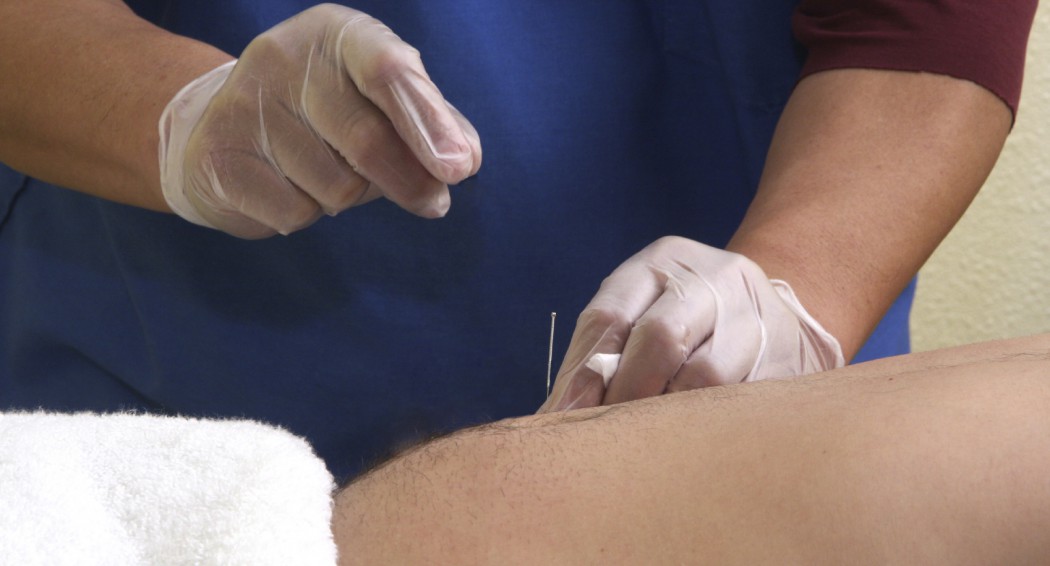Dry needling is a procedure similar to acupuncture, but based on Western medicine. It uses a very thin, solid-filament needle inserted at myofascial trigger points where multiple top bands of tissues come together. Dry needling is used to help reduce muscle pain at the site or referred pain in the adjacent area. Referred pain is when a problem exists somewhere else in the body other than where you feel the pain.
Dry needling can help anyone with chronic tension, spasms or soreness in the muscles, tendons or ligaments. It is also good for treating migraines and tension headaches.
While it uses similar tools as acupuncture — in fact, the needles are the same — dry needling is based on Western medical practice and long-term research into how nerve signals travel from the point of pain and are perceived by the brain. The research shows insertion of one or more needles at the point of pain or in the tissue nearby can help lessen pain.
For example, if you experience pain in your ankle, you might be helped by having dry needle insertion in the muscle that runs from the calf to the foot in order to “re-route” the pain signals.
Dry needling is used to help any musculoskeletal problems, such as chronic calf tightness, tennis elbow or for a sciatic issue that hasn’t responded to treatment. Sports medicine specialists, physical therapists or physiatrists often refer patients when standard manual techniques in physical therapy haven’t reduced pain sufficiently.
 By James Bickley, a physical therapist and dry needling site coordinator at AAMG Physical Therapy in Odenton. To reach his practice, call 410-674-1650.
By James Bickley, a physical therapist and dry needling site coordinator at AAMG Physical Therapy in Odenton. To reach his practice, call 410-674-1650.



